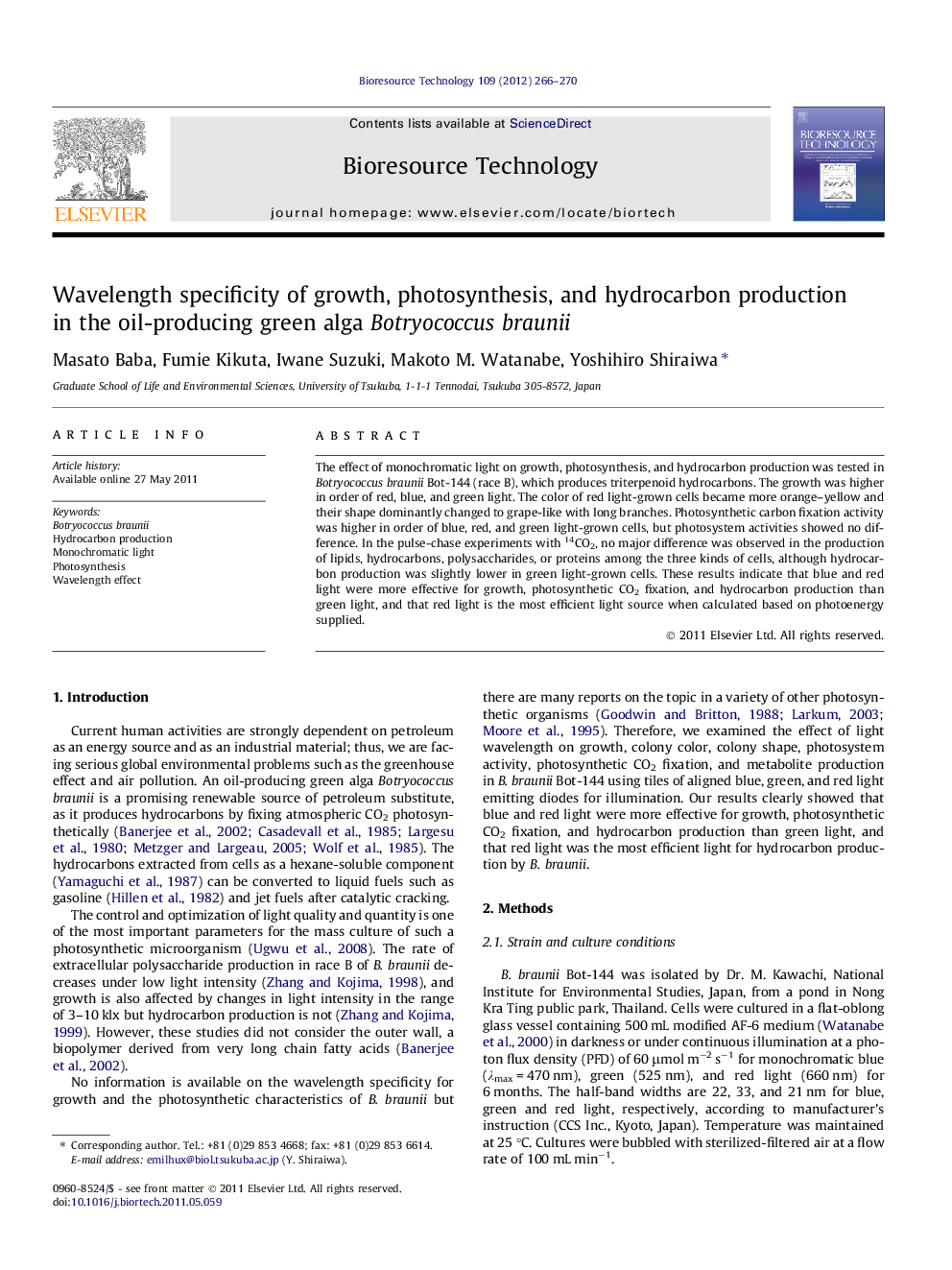| کد مقاله | کد نشریه | سال انتشار | مقاله انگلیسی | نسخه تمام متن |
|---|---|---|---|---|
| 681643 | 1460034 | 2012 | 5 صفحه PDF | دانلود رایگان |

The effect of monochromatic light on growth, photosynthesis, and hydrocarbon production was tested in Botryococcus braunii Bot-144 (race B), which produces triterpenoid hydrocarbons. The growth was higher in order of red, blue, and green light. The color of red light-grown cells became more orange–yellow and their shape dominantly changed to grape-like with long branches. Photosynthetic carbon fixation activity was higher in order of blue, red, and green light-grown cells, but photosystem activities showed no difference. In the pulse-chase experiments with 14CO2, no major difference was observed in the production of lipids, hydrocarbons, polysaccharides, or proteins among the three kinds of cells, although hydrocarbon production was slightly lower in green light-grown cells. These results indicate that blue and red light were more effective for growth, photosynthetic CO2 fixation, and hydrocarbon production than green light, and that red light is the most efficient light source when calculated based on photoenergy supplied.
► Red light-grown Botryococcus braunii showed orange–yellow grape-like morphology.
► Light quality affected photosynthetic carbon fixation but not photosystems.
► Lipid and polysaccharide production was same irrespective of light quality.
► Blue and red light were more effective for growth, photosynthetic CO2 fixation.
► Red light is the most efficient light source for hydrocarbon production.
Journal: Bioresource Technology - Volume 109, April 2012, Pages 266–270